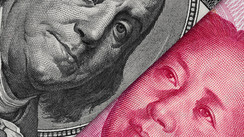Introduction to Exchange-Traded Products: ETC, ETF, and ETN
In the bustling world of financial markets, the terms exchange traded commodity (ETC), commodity exchange traded fund (ETF), and exchange traded note (ETN) often echo through boardrooms and trading floors. But what do they really mean? Are they mere financial jargon or crucial tools for investment? This in-depth examination seeks to unravel these complex concepts and present them in a clear and concise manner.
While ETC and ETF may sound similar, the truth is far more nuanced. Despite surface-level similarities, ETCs and ETFs are distinct in their structure and function. To comprehend the differences and draw an educated investment decision, one must delve into their intricacies.
Understanding ETCs: Specifics and Benefits
An In-Depth Look at ETC
An Exchange Traded Commodity (ETC), a term primarily found in European and Australian financial markets, functions as a specialized security traded on esteemed stock exchanges. These include global giants like the London Stock Exchange and the Australian Securities Exchange.
At first glance, ETCs seem to mirror commodity ETFs or exchange traded notes (ETNs), but underlying structural variations set them apart.
An ETC represents a unique financial product, distinct from commodity ETFs or ETNs. Unlike ETFs, which typically comprise various commodities or securities, an ETC offers an undiluted exposure to a single commodity or index. For investors seeking to invest in commodities without venturing into the labyrinthine world of futures and options trading, ETCs present an appealing avenue.
Performance and Accessibility: A Closer Look
An ETC functions similarly to a stock but remains keenly focused on tracking the price of a specific commodity or commodity index. This opens doors for investors to engage with commodity markets without purchasing complicated futures contracts or the tangible commodity itself.
By aligning its share price with the spot or futures price of the underlying commodity, an ETC reflects the fluctuations in value of the commodity it represents. ETCs offer an accessible path for individual investors into specific commodities, bypassing the need to engage in more intricate futures or options investments.
Furthermore, ETCs operate as managed investment funds, typically supervised by seasoned investment managers, and carry an expense ratio to handle administrative costs.
ETFs and ETNs: A Closer Examination
Comparing ETCs and Commodity ETFs: A Detailed Perspective
Commodity ETFs adopt a different approach from ETCs by directly engaging with the commodity they represent. This means they may buy or sell the actual commodity or related futures contracts, a method that ETCs do not employ directly.
Meanwhile, ETNs, bearing a striking resemblance to ETCs, follow a "note" structure. This unique structure carries the inherent risk of the underwriter defaulting, a scenario that could render the ETN valueless despite the underlying commodity retaining its value.
Advantages and Structural Insights: Exploring the Benefits
Investing in commodities through these vehicles can be rewarding. The benefits include acting as an inflation buffer and maintaining a low correlation to traditional equity and bond markets. An ETC serves as a fusion of an ETF and ETN, secured by an underwritten note and further strengthened by collateralization with physical commodities. This hybrid construction reduces the likelihood of underwriter default, providing a layer of security for investors.
Additionally, ETCs and ETNs are known for fewer tracking errors compared to ETFs, thus mirroring the movements of the commodity price more accurately.
Real-World Comparisons and Considerations
Case Studies: iShares Gold Trust vs. Physical Gold ETC
When it comes to real-world examples, the iShares Gold Trust (IAU) and iShares Physical Gold ETC (SGLN) offer compelling insights. While both track the price of gold, their underlying structures and associated costs differ.
IAU buys physical gold in exchange for shares issued, providing the buyer with a fractional piece of the gold held in trust. In contrast, SGLN relies on the financial backing of underwriters. These structural nuances, although subtle, can influence the choice between these investment vehicles.
Performance Considerations: Scrutinizing the Details
Despite minor differences between the performance of ETFs, ETNs, and ETCs, certain situations may reveal significant variations. It is imperative for investors to scrutinize these products meticulously, considering multifaceted factors such as volume, structure, expense ratio, and more.
FAQs and Final Takeaways
Are Commodity ETFs Worth It? An Analysis
Yes, commodity ETFs can be a robust addition to an investment portfolio, offering diversification and alignment with specific investment objectives and risk profiles.
Largest and Most Diversified Commodity ETFs: An Overview
The SPDR Gold Trust (GLD), reigning as the largest commodity ETF, and the Invesco DB Commodity Index Tracking Fund (DB), exemplifying diversification, stand as noteworthy mentions in the global market.
The Bottom Line: Drawing Conclusions
The differences between ETCs, ETFs, and ETNs are layered and filled with technicalities and legal intricacies. Deciphering these complexities is no trivial task, but essential for making informed investment decisions. Whether it's the direct investment in commodities by ETFs or the debt-note approach of ETCs, these structural dissimilarities must be carefully weighed. Investors would do well to research and identify the subtle advantages that could make one product more fitting than the others.





